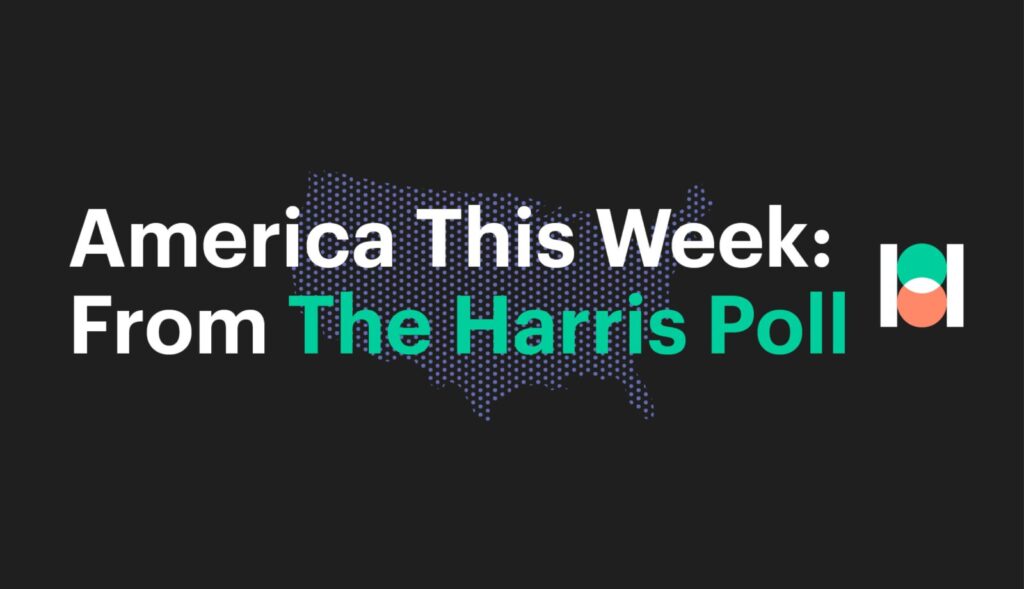Brief • 4 min Read

For Mental Health Awareness month this May, The Harris Poll conducted a meta-analysis of various pieces of client commissioned work on the topic of mental health. These engagements reflect the attitudes and experiences of the public, parents, young people, and employed adults. Additionally, these findings reflect those working in the field and the perspective of health care providers. The data show consistent and persistent themes that require collective action and some bright spots to further build upon.
The findings show a nation in need. Many – adults and children alike – report a strong need for mental health care. Yet, the need is not being met. Few seek care and for those who do, accessing care presents its own set of challenges. When left untreated there are consequences at home, at work and in personal relationships.
More positively, the data also indicate that there is less stigma and more openness around mental health, including suicide. There is a desire to help if the right resources and information are provided. Digital tools are seen as a way to expand access to care. Social media is the double-edged sword, seen both as troublesome for children and as potentially as a source of positive information.
While individuals can take steps to find care, learn about their insurance and how to navigate what may be available and prioritize their own mental health, individual change is not enough. Change is needed at scale including policy changes for both those working in the field, training for those in a position to make a difference and better resources for the public.
Mental health is top-of-mind in the U.S. It’s as important as physical health. Yet, those working in the field express concern about the impact on society of workforce shortages. Declines in mental health are noted by physicians and those working in the field are concerned about their ability to provide care in the event of another health crisis in the future.
- Professional Audiences
- Large majorities (83%) of behavioral health workers worry that shortages in the mental health and substance use treatment workforce will negatively impact society as a whole and 87% are concerned about the ability to provide care in the event of another health crisis in the future (National Council for Mental Wellbeing Behavioral Health Workforce Survey)
- Among employed adults, seven in ten (71%) believe their employer is more concerned about employees’ mental health than they were in the past (APA 2022 Work and Well-being Survey)
- Over half of physicians (56%) report declining mental health among their patients (CVS Health)
- Public Audiences
- Three-quarters of U.S. adults (76%) perceive mental health as equally important to mental health, however, half (51%) feel physical health is treated as more important (2022 Suicide Prevention Public Perception Survey)
- Large majorities (87%) of Americans are concerned about the mental health status of youth in the country and 80% of parents of children under 18 are concerned about the mental health of their own children (Hopeful Futures Campaign)
- 85% of Americans agree that there is a mental health crisis among youth in the United States today (Hopeful Futures Campaign)
The concerns are wide-ranging and impact all of us, in our public and private spaces. Specific concerns are noted, particularly as it relates to mental health at work and the role that social media plays.
- Large majorities of employed adults (81%) agree that how employers support mental health will be an important consideration for them when they look for future work (APA 2022 Work and Well-being Survey)
- This includes:
- Flexible work hours (41% of workers want this from their employer)
- Workplace culture that respects time off (34%)
- Ability to work remotely (33%)
- Four-day work week (31%) (APA 2022 Work and Well-being Survey)
- Half of U.S. parents of children under 18 (50%) feel their child(ren)’s mental health has suffered during the past 12 months because of social media use (On Our Sleeves Movement for Children’s Mental Health). Similarly, among adults 18-32, nearly 6 in 10 (58%) report that social media has negatively impacted their mental health (CVS Health)
- Moreover, the proportion of parents who think that social media has a positive impact on children’s mental health has dropped since 2022 (35% in 2023 vs. 43% in 2022) (On Our Sleeves Movement for Children’s Mental Health)
This is personal. Many are experiencing a mental health challenge and access is a barrier to receiving needed care. Cost, insurance and availability of appointments and providers are among the top challenges cited. Behavioral health workers are burdened by administrative tasks, with many saying admin tasks take away from time they could be supporting clients.
- 42% of Americans express concern about their mental health yet only 1 in 10 regularly sees a mental health professional like a psychiatrist, psychologist, psychotherapist, or well-being therapist (CVS Health)
- Nearly half of Americans (48%) think it is difficult for today’s youth to get professional mental health help when they need it. (Hopeful Futures Campaign)
- 90% of behavioral health workers are concerned about the ability of those not currently receiving care to gain access to care (National Council for Mental Wellbeing Behavioral Health Workforce Survey)
- 43% of US adults who say they needed substance use or mental health care in the past 12 months did not receive that care (2022 Access to Care Survey)
- Cost (31% among those with unmet substance use needs and 37% among those with unmet mental health needs) and challenges finding a provider or getting an appointment are top barriers for those with unmet needs (2022 Access to Care Survey)
- Insurance is a particular pain point: 60% of U.S. adults feel there are not enough mental health care providers available that accept health insurance as payment and virtually the same proportion (59%) say it’s easier and faster to get mental health or substance use care if they pay out of pocket versus insurance (2022 Access to Care Survey)
- More than two-thirds (68%) of those working in behavioral health and provide care to patients say the amount of time spent on administrative tasks takes away from time they could be directly supporting clients (National Council for Mental Wellbeing Behavioral Health Workforce Survey)
Bright spots do exist. There is less stigma and more openness to talk about mental health, including suicide. However, discomfort still exists.
- 87% of adults agree that having a mental health disorder is nothing to be ashamed of and 84% agree that people should not be ashamed to say a loved one died by suicide (Attitudes toward Mental Health, APA)
- 87% of adults agree that people should talk about suicide more openly (Attitudes toward Mental Health, APA)
- 79% agree that less stigma and shame around mental health disorders would lower suicide rates (Attitudes toward Mental Health, APA)
- Yet, discomfort still exists around these topics:
- 2023 data show that fewer parents said they were comfortable talking with their children about mental health (86% in 2023 vs. 91% in 2022) (On Our Sleeves Movement for Children’s Mental Health)
- 63% of adults agree that suicide is a selfish act and 30% say that if a loved one died by suicide they would keep quiet about the cause of death (Attitudes toward Mental Health, APA)
The public is hopeful with most feeling that suicide can be prevented, and people can get better. They are willing to help if they knew how.
- 94% of adults in the US believe that suicide can be prevented, at least some of the time and 96% would take action to help prevent suicide if someone close to them was thinking about suicide (2022 Suicide Prevention Public Perception Survey)
- 86% of adults said they believe that people with mental health disorders can get better (Attitudes toward Mental Health, APA)
- Two-thirds believe they don’t have enough knowledge to tell is someone is considering suicide and 80% are open to learning how they can do more to help someone in need (2022 Suicide Prevention Public Perception Survey)
Those with unmet mental health or substance use needs report impacts at work, in personal relationships and declines in their overall mental wellbeing.
- Nine in ten (90%) of those who have unmet mental health care needs are impacted due to not receiving care including in their personal relationships (50%), at work (45%) and a decline in their overall mental wellbeing (44%) (2022 Access to Care Survey)
- Similarly, nearly nine in ten (87%) of those with unmet substance use care needs report similar impacts: (49% work issues, 43% personal relationship issues, 37% decline in mental wellbeing) (2022 Access to Care Survey)
Solutions do exist to help individuals, families and the professionals working in the field. There is a role for policy change, for expansion of digital services and even for social media as a source of positive information, resources, and education.
- 83% of behavioral health workers believe that without public policy changes, provider organizations won’t be able to meet the demand for mental health or substance use treatment and care (National Council for Mental Wellbeing Behavioral Health Workforce Survey)
- More than 8 in 10 parents of children under 18 support:
- Providing training to teachers and staff to recognize early signs of mental health challenges and substance misuse (86%)
- Providing more trained mental health professionals in schools (86%)
- Creating partnerships between schools and community behavioral health providers to support students with mental health challenges and their families (83%)
- Providing students with age-appropriate training in schools to develop self-awareness, self-management, social awareness, and relationship skills for school, work, and life success (83%)
- Ensuring schools receive funding to implement school mental health programs (81%) (Hopeful Futures Campaign)
- Younger adults (18-32) are more likely than older adults (those 57 or older) to rely on the internet or social media when it comes to accessing mental health information (CVS Health)
- 85% of people ages 33 to 40 believe digital health services have made mental health care more accessible (CVS Health)
*****
Sources:
Among a general population audience
Client: National Council for Mental Wellbeing
- 43% of US adults who say they needed substance use or mental health care in the past 12 months did not receive that care, twice as many who did not receive needed primary care
- Among those who did not receive needed care, there are impact on work, personal relationships and a reported decline in mental wellbeing
- Cost and challenges finding a provider or getting an appointment are top barriers for those with unmet needs
- Insurance is a particular pain point: 60% feel there are not enough mental health care providers available that accept health insurance as payment, 59% say it’s easier and faster to get mental health or substance use care if they pay out of pocket versus insurance
2022 Suicide Prevention Public Perception Survey
October 2022 among a general public audience
Client: National Action Alliance for Suicide Prevention (Action Alliance), American Foundation for Suicide Prevention (AFSP) and Suicide Prevention Resource Center (SPRC)
- Majorities perceive mental health as equally important to mental health, however, over half feel physical health is treated as more important
- 94% of adults in the US believe that suicide can be prevented, at least some of the time and 96% would take action to help prevent suicide if someone close to them was thinking about suicide
- Two-thirds believe they don’t have enough knowledge to tell is someone is considering suicide and 80% are open to learning how they can do more to help someone in need
Public Perceptions of Mental Health
February 2022 among a general population audience, including 657 parents of children under 18
Client: Hopeful Futures Campaign
- 87% of Americans are concerned about the mental health status of youth in this country.
- 80% of parents are concerned about the mental health status of their own children.
- 85% of Americans agree that there is a mental health crisis among youth in the United States today.
- Over half of Americans (55%) are extremely or very concerned about the mental health status of youth in the U.S. In comparison to when they were younger, 65% of Americans say the mental health status of today’s youth is worse than when they were younger.
- Nearly half of Americans (48%) think it is difficult for today’s youth to get professional mental health help when they need it.
- Strong support, at 8 in 10 or more, for a variety of proposals to support youth mental health including teacher training, partnerships between school and community organizations, more mental health professionals in school, training for students and funding to implement such programs.
Attitudes toward Mental Health
November 2018 among a general population audience
Client: American Psychological Association
- 87% of adults agree that having a mental health disorder is nothing to be ashamed of
- 86% of adults said they believe that people with mental health disorders can get better
- Overall attitudes toward suicide reflect a feeling that people can be treated and get better, that it should be talked about more openly, that suicide can be prevented and not have shame or stigma around this issue –79% agree that less stigma and shame around mental health disorders would lower suicide rates
- 84% agree that people should not be ashamed to say a loved one died by suicide
- 63% of adults agree that suicide is a selfish act and 30% say that if a loved one died by suicide they would keep quiet about the cause of death
APA 2022 Work and Well-being Survey
May 2022 among employed (FT, PT, self-employed) US adults
Client: American Psychological Association
- Increased belief among employees that their employer is concerned about their mental health
- And strong support that how employers support mental health will be an important consideration for them when they look for future work
- This includes:
- Flexible work hours
- Workplace culture that respects time off
- Ability to work remotely
- Four-day work week
On Our Sleeves Movement for Children’s Mental Health
May 2023 (data collection in March/April) among gen pop including 700+ parents of children younger than 18
Client: On Our Sleeves
- Half of U.S. parents think social media is bad for their children’s mental health
- Proportion of parents who said social media has a positive impact on children’s mental health (43% in 2022 vs. just over one-third in 2023)
- And fewer parents, in 2023, said they were comfortable talking with their children about mental health (86% in 2023 vs. 91% in 2022)
March 2023 among gen pop, physicians, and pharmacists
Client: CVS Health
- 42% of Americans express concern about their mental health yet only 1 in 10 regularly sees a mental health professional like a psychiatrist, psychologist, psychotherapist or well-being therapist
- Younger adults (18-32) are more likely than older adults (those 57 or older) to rely on the internet or social media when it comes to accessing mental health information
- 85% of people ages 33 to 40 believe digital health services have made mental health care more accessible
- 6 in 10 adults ages 18-32 report that social media has negatively impacted their mental health
- Over half of physicians (56%) report declining mental health among their patients
Behavioral Health Workforce Survey
February-March 2023 among behavioral health workers
Client: National Council for Mental Wellbeing
- 83% of behavioral health workers believe that without policy changes, provider organization won’t be able to meet the demand for mental health or substance use treatment and care
- 90% are concerned about the ability of those not currently receiving care to gain access to care
- 87% are concerned about the ability to provide care in the event of another health crisis in the future
- 83% worry that shortages in the mental health and substance use treatment workforce will negatively impact society as a whole
- 68% of those who provide care to patients say the amount of time spent on administrative tasks takes away from time they could be directly supporting clients
Subscribe for more Insights
Subscribe to our newsletter for the latest trends in business, politics, culture, and more.
Related Content









